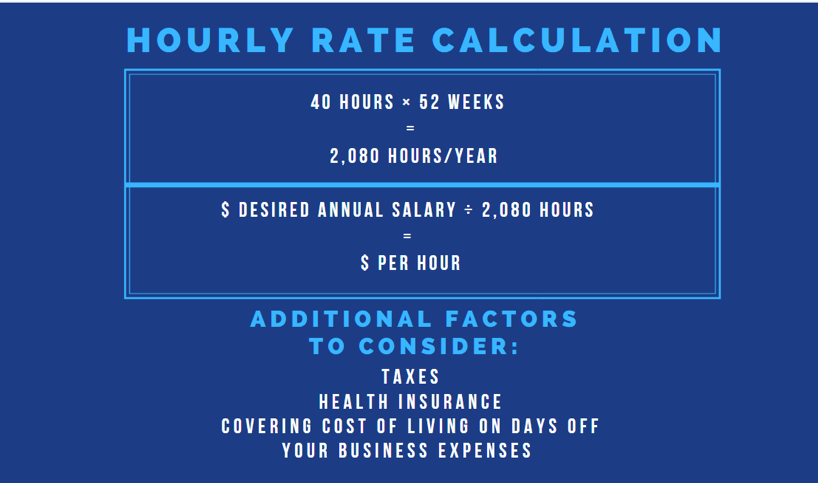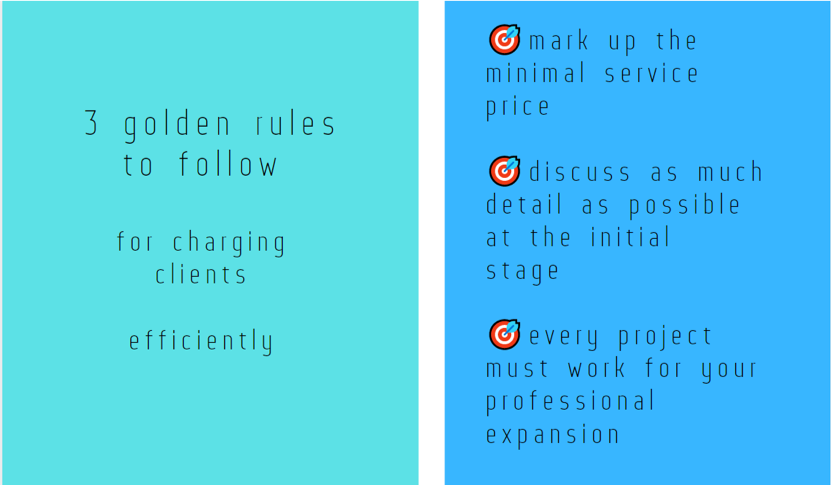How Businesses Charge Clients and Calculate Hourly Rate

How Businesses Charge Clients and Calculate Hourly Rate
Contributed ContentYour business belongs to the world of ideas and money, and while your ideas are exclusively in a domain of your creativity, the money that your business brings depends on how accurate you are in calculating the hourly rate of your service.
Only about 60% of work hours come under the definition of 'chargeable' because of the time spent on managing projects. For example, handling administrative routine, working out marketing campaigns and preparing proposals isn’t chargeable.
Those extra factors need to be taken into consideration when businesses are calculating hourly rates.
How Businesses Charge Clients and Calculate Hourly Rate
- Service-based businesses charge based on services
- Freelancers set project-based fees
- Ensure accurate calculations for billable hours
- Address customers’ expectations on explaining the rates
Service-Based Businesses Charge Based on Services
A chargeable hour is the work time enabling you to bill the client. Although employees do not actually charge or calculate themselves, it does not diminish the importance of understanding the rating mechanism.
Your employer can bill customers for offering employee services on a chargeable basis. Chargeable hours can differ between different companies. But in service-based businesses, anything that contributes to the generation of income belongs to chargeable hours.
For example, working on client projects, making phone calls, email correspondence, and even travel time can be attributed to chargeable hours. In some companies, such as law firms, it is required to meet a certain number of chargeable hours.
Freelancers Set Project-Based Fees
For those who wish to freelance their skills, the factors of importance for picking up the proper formula of calculations are:
- The number of years of experience in the profession
- The level of expertise
Additionally, by creating options for the customers, freelancers can easily expand on their offers and, therefore, charge more. To achieve this, they should make it a strategy to tailor the offered service to the clients' needs.
One of the pricing strategies freelancers use is setting project-based fees. Under a fixed-fee strategy, freelancers can receive on-hand experience for estimating time and resources. They also will learn how to negotiate.
Freelancers usually charge fixed fees when their client intake is high, they know how to productize their services and are confident in the results they give customers.
However, in the case of fixed-feed scenarios, freelancers have to be ready to address lots of clients' questions on what exactly the project cost incorporates.
So, in case you prefer the relations based on the specific self-explanatory numbers, take the following steps to calculate the hourly rate:
- Set the goal by identifying the annual income
- Decide on the number of days you dedicate to work
- Divide the amount on the number of working days
- Decide on the number of hours you will be able to work at max
- Divide the expected daily income into the number of hours
After adhering to those steps, freelancers will find their desired hourly rate. In the image below, there is the ideal calculation for people working 40-hour weeks each week of the year:

As stated above, there are other factors to consider. Being realistic, workers have to factor in taxes, insurance, day-offs and sick leave, and any business expenses.
Whether freelancers opt for charging hourly or per project, there are five general rules to follow:
- Mark Up the Minimum: do not sell yourself below the minimal price marked up for your service.
- Charge More: it pertains to the case when you expect the client will be difficult to deal with.
- Dive into Details: make sure to discuss as much detail as possible at the initial stage to remove any uncertainty off clients' minds.
- Refresh: evaluate the profitability of certain types of projects to improve forecasting skills and know estimates better.
- Expand: either you expand your digital skills or the list of your credentials, it results in increasing your pricing.
The image below goes into the three essential rules for businesses to follow when deciding what to charge their clients.

After figuring out the minimum cost, go into specific details of the project while maintaining professional approach.
Ensure Accurate Calculations on the Billable Hours
If you do not want your eyes to glaze over the numbers, the best way to ensure the accurate calculations is to incorporate some reliable time tracking software into your work.
With implementing the usage of digital time trackers, it is easy to make calculations transparent and enhance business productivity by optimizing the admin routine and, thus, charge clients more effectively.
Why is it important: Detail is the key to charging clients without raising questions. The importance of calculating nonbillable hours is underrated. To avoid any misunderstandings, automate time recordings with time tracking software. It will help you prevent any confusion when you are filling in your chargeable hours including the non-billable hours.
If out of eight chargeable hours, meetings took up two: the reports generated by a time tracker will make time recording and keep everybody accountable.
There is a huge difference between a neatly presented timeline with automatic recordings on your work and painful recalling details on the particular working day in front of the doubtful customer asking your clarifications on charges.
Clients that get sufficient information in the invoice on detail pertaining to services you performed, are not likely to doubt the time that was utilized on the projects.
Address Customers' Expectations on Explaining the Rates
Customers want to go to the bottom line: the price. But a blunt approach is the wrong approach. The most justified answer and response would be that it depends on their specific needs.
Why is it important: Diving into wants and needs of the customer will give you an overview of the expected range of work and time you have to allocate. The more detail you include into rates, the less guesswork you and your customer will encounter.
Calculating the Right Price to Mirror Your Work
The rate for the hourly time is defined by demand and supply ratio in the field of your service, and, thus, can considerably vary depending on lots of geographic and economic factors.
When charging flat fees for the project, you still need to be an expert on breaking down your hourly rates because, with a good understanding of the hourly rate components, you can forecast the revenue stream and charge to reach the consistent profitability.
By enhancing your productivity and reaching the new level of expertise, you can effectively increase your hourly rate.
